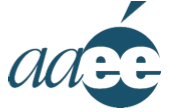This is a GFO-related publication, published with permission from the author. It is a summary from the 2020-2021 Educator Supply and Demand Report, compiled and published by the American Association for Employment in Education (AAEE).
Shortages are nearly everywhere.
Since 2018-2019, both colleges/universities and school systems have agreed that the secondary teaching fields of Physics, Chemistry, and Mathematics have been experiencing a “considerable shortage” in the U.S.
Mathematics: According to school districts, the specific U.S. regions currently experiencing a “considerable shortage” of Mathematics teachers are the Rocky Mountain, Southeast, Middle Atlantic, and Northeast regions of the country, as well as Alaska.
Chemistry: The specific U.S. regions currently experiencing a “considerable shortage” of Chemistry teachers are the Rocky Mountain, Great Plains/Midwest, South Central, Southeast, Middle Atlantic, and Northeast regions of the country, as well as Alaska.
Physics: All parts of the country are experiencing a “considerable shortage” of Physics teachers, except for the Northwest region (where there is “some shortage”).
Universities prepare few STEM teachers.
Mathematics: 95% of responding colleges and universities offered programs in Mathematics, with an average annual number of graduating students of 11. The number of respondents offering Mathematics programs has increased 10% over the past 6 years, but the average number of graduating students has remained steady.
Chemistry: 85% of responding colleges and universities offered programs in Chemistry, with an average annual number of graduating students of 8. The number of respondents offering Chemistry programs has increased 16% over the past 6 years, and the average number of graduating students has increased over that time as well.
Physics: 61% of responding colleges and universities offered programs in Physics, with an average annual number of graduating students of 4. The number of respondents offering Physics programs has increased 7% over the past 6 years, but the average number of graduating students has remained steady.
To purchase a printed copy of (or digital access to) the full 42-page Educator Supply and Demand Report, please visit AAEE’s website or email info@aaee.org.



